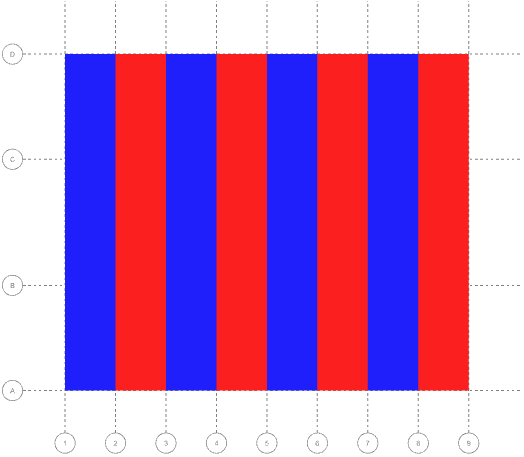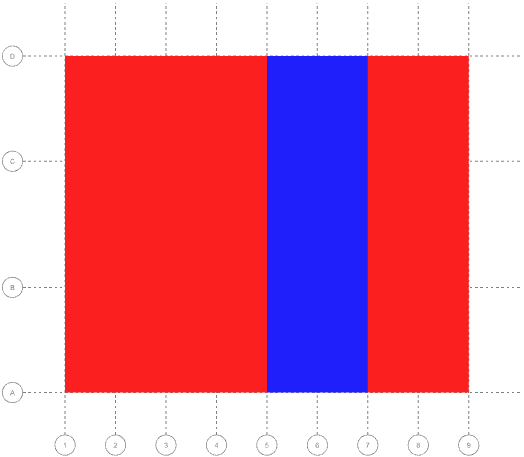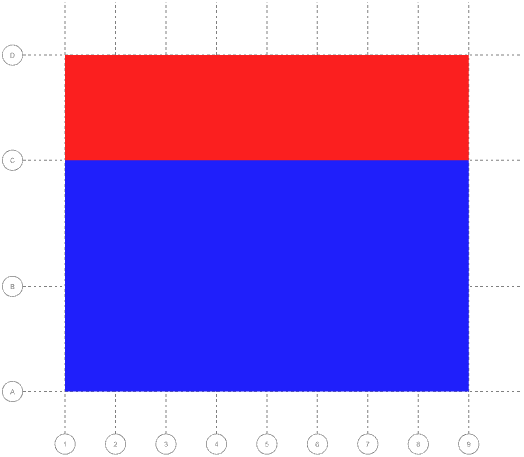Plate pattern loading
This tool lets you quickly generate pattern pressure loads on slabs. The tool depends on you first creating gridlines in the two orthogonal directions to define the regions that will be loaded. Combination load cases are also created that consider all combinations of the loaded regions.
After selecting the plates to be loaded you should right-click and then select "Loads" => "Generate Pattern Loading" from the popup menu that appears.
In the following form that appears, you can set the starting numbers for the primary and combination load cases that will be created and the local Z-axis pressure.
If you don't want to apply pattern loads to plates that are outside the selected gridlines (ie. outside the gridlines that are ticked in the gridlines table below) then you should untick the "Include plates outside the selected gridlines" option.
If you are loading plates outside the selected gridlines and the "Treat plates outside selected gridlines as separate load panels" option is unticked then any plates outside the selected gridlines will be combined with the first row of load panels inside the selected gridlines. If ticked then they will be treated as separate load panels.
Any gridlines that you want to ignore can be unticked in the gridlines table in the middle of the form. This will cause some loading regions to be combined.
If you want to combine the generated pattern loads with other non-pattern loads such as self weight for example then you can enter the details into the table at the bottom to create extra combination load cases.
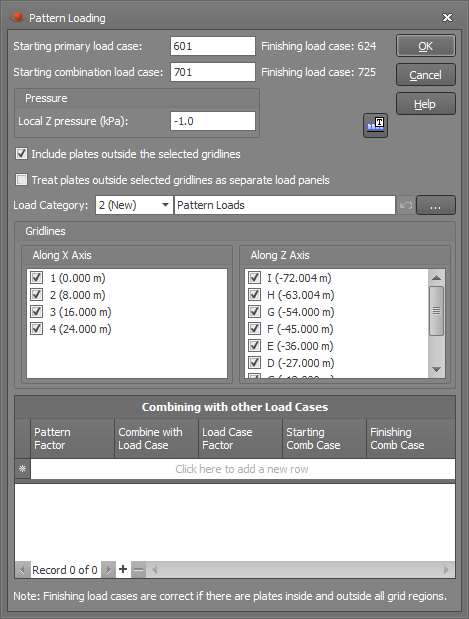
In the following example, the slab to be loaded has 24 regions defined by the gridlines.
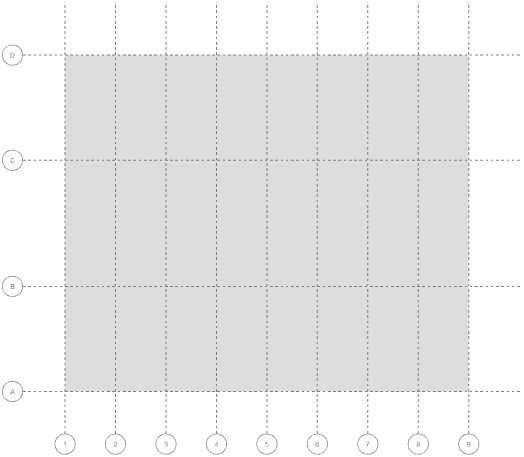
If we select the entire slab for loading this results in 24 primary load cases being generated. A typical loaded region is shown below.
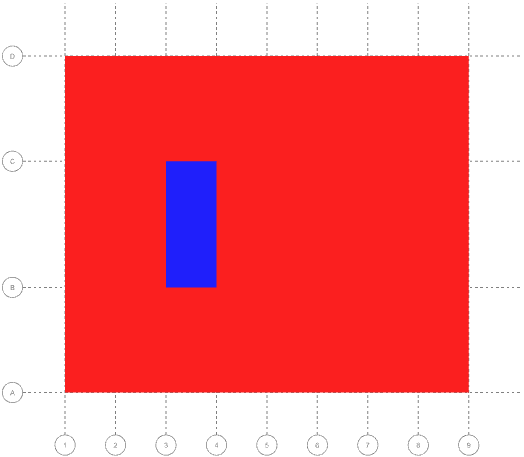
In this example 24 combination load cases are also created that cover all the combinations of adjacent and alternate regions that extend in the longitudinal and transverse directions. A sample of some of the loading patterns created by the combination load cases are shown below.
